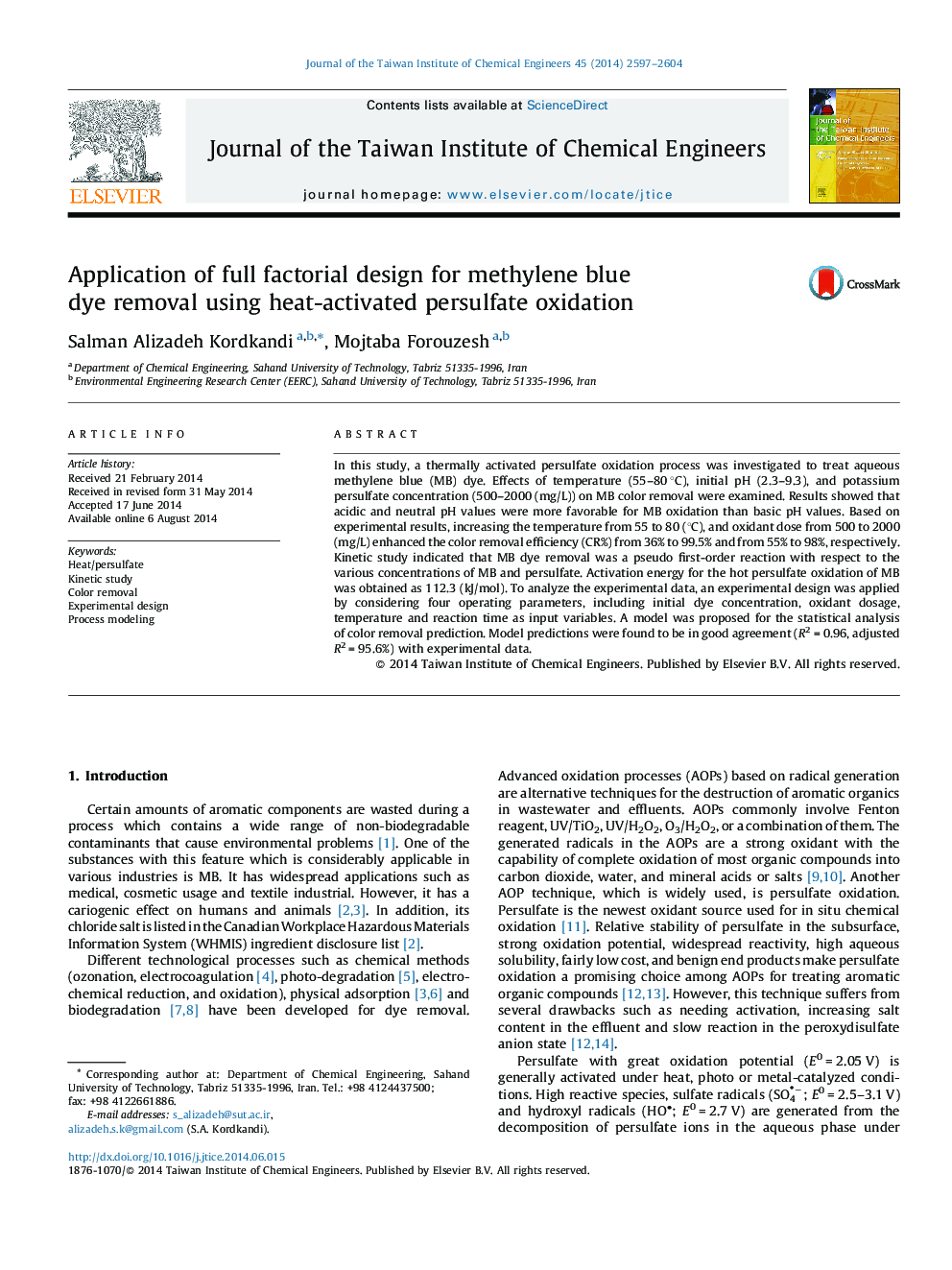| Article ID | Journal | Published Year | Pages | File Type |
|---|---|---|---|---|
| 691527 | Journal of the Taiwan Institute of Chemical Engineers | 2014 | 8 Pages |
•Decolorization of methylene blue was carried out from dyeing wastewater.•Thermal activation was used for radical generation.•Kinetic studies were performed based on various concentrations of methylene blue and potassium persulfate.•Application of experimental design technique was found to be an efficient tool for process analysis and modeling.
In this study, a thermally activated persulfate oxidation process was investigated to treat aqueous methylene blue (MB) dye. Effects of temperature (55–80 °C), initial pH (2.3–9.3), and potassium persulfate concentration (500–2000 (mg/L)) on MB color removal were examined. Results showed that acidic and neutral pH values were more favorable for MB oxidation than basic pH values. Based on experimental results, increasing the temperature from 55 to 80 (°C), and oxidant dose from 500 to 2000 (mg/L) enhanced the color removal efficiency (CR%) from 36% to 99.5% and from 55% to 98%, respectively. Kinetic study indicated that MB dye removal was a pseudo first-order reaction with respect to the various concentrations of MB and persulfate. Activation energy for the hot persulfate oxidation of MB was obtained as 112.3 (kJ/mol). To analyze the experimental data, an experimental design was applied by considering four operating parameters, including initial dye concentration, oxidant dosage, temperature and reaction time as input variables. A model was proposed for the statistical analysis of color removal prediction. Model predictions were found to be in good agreement (R2 = 0.96, adjusted R2 = 95.6%) with experimental data.
